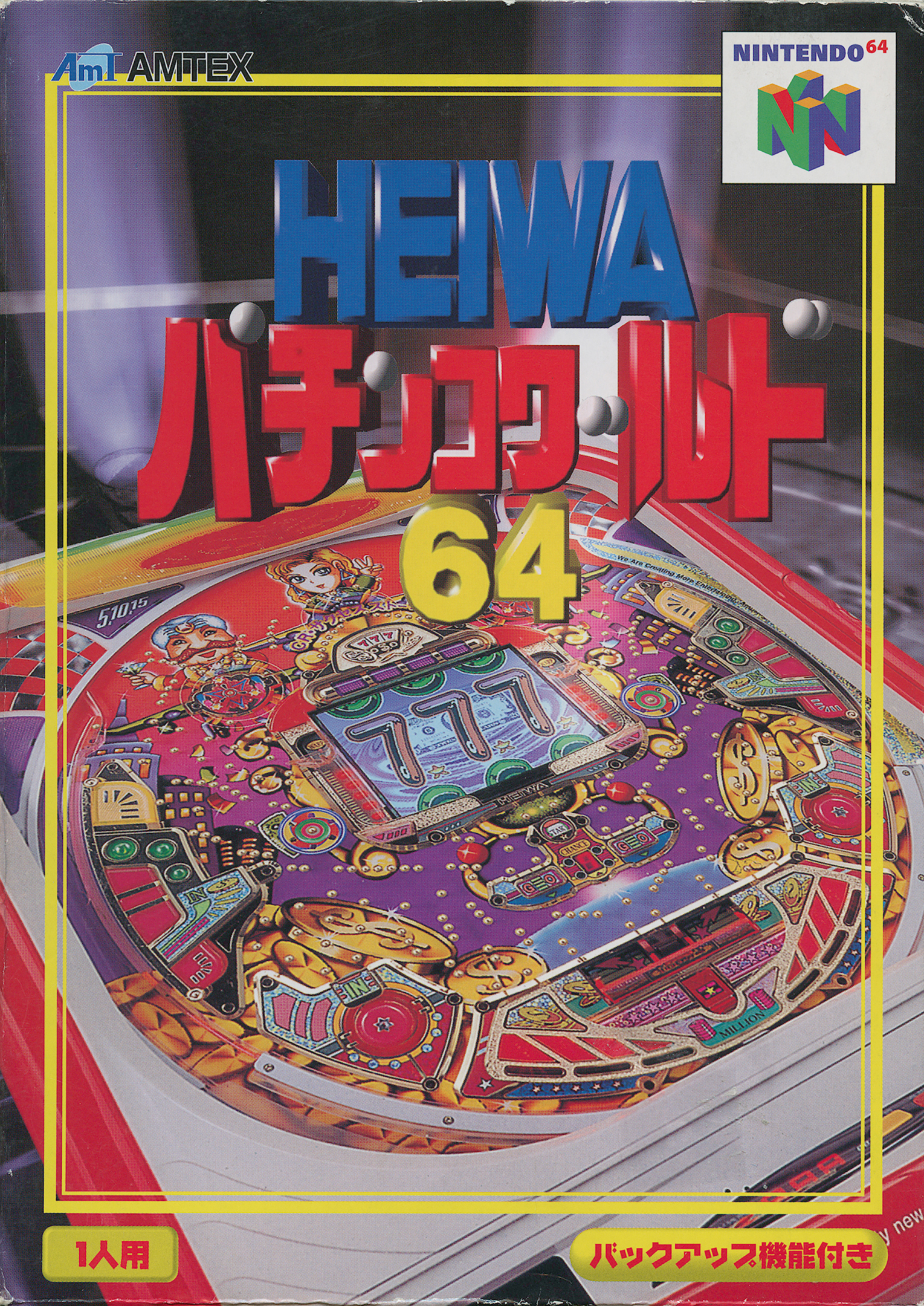Developer: Shouei System Publisher: Amtex
Released: November 28, 1997 2/10
From the category of games that are largely culturally irrelevant in the West, pachinko simulators were nothing new to the gaming world by 1997. A cross between slot machines and pinball, pachinko essentially fills the role of the former, as cash gambling is illegal in Japan. By extension, the parlors that feature these machines serve the same purpose of casinos in the western world, albeit with extra steps, as patrons can exchange their hundreds of tiny steel balls for prizes on the way out, like a seedy, smoke-filled Chuck E. Cheese, only where you then take your prizes to another shop down the road and get paid cash value for them in order to skirt the law preventing the Chuck E. Cheese from paying you directly for the little balls you won. As such, you can see where pachinko simulators would fill a similar role to casino and poker video games, as well as some further DNA shared with digital pinball recreations: play and practice at home without the inherent financial risk every time you want to play, and get yourself a close simulation of the machines you intend to play on so you can learn the ins and outs of them for your next trip to the parlor.

Unfortunately, for Heiwa Pachinko World 64 as a gameplay experience, this does inform a lot of shortcomings as to its fun factor, especially outside of Japan, and even more especially in the modern era. Starting with its ability to “recreate” the machines themselves, the effort is certainly there, and it’s easy to see how this game would be sold, like titles before it on the Super Famicom and others, as a way to practice and learn these machines and perform better on the real machine. It’s also nice to think that you could simply play a machine for the fun factor and enjoy the sights and sounds of it just for being good machine for an enthusiast, much like you might say about good pinball machines — Pin-Bot didn’t get an NES recreation back in the ’80s at random, it’s a genuinely great machine that people would want to play at their leisure. But it’s tough to see what’s on offer here as something people would be happy with, even back in 1997. While being able to study rules, payouts, and more of a machine’s technical aspects sounds nice, and doing so on the internet wouldn’t be an option for everyone, the recreations of, well, everything in Heiwa Pachinko World 64 feel sub-par in every aspect, to say the least.

Each of the four machines in the game — CR Success Story SP, Lemon Pie (Pi), CR Dama-chan House, and Bijyo Daishugo 2 — is recreated with a pretty simple texture of middling quality with pins and other accoutrements dotted around it. While they may be in the appropriate places, and therefore, decently accurate recreations, it’s tough to imagine anybody finding them to be appealing to sit in front of in this form. The advertised free-form camera is still pretty limited and slow-moving, the menus are basic and yet far too hard to navigate (even on a ROM where they are translated to English) for such a simple set of options, and attempts to recreate the parlors themselves as you navigate to an open machine in first person are some of the most unpleasant representations I can imagine for such a mundane experience. Textureless, basic 3D polygons with zero actual interactivity between yourself and the Lego minifigures that populate some of the adjoining seats and counters. The whole thing gives big liminal space vibes, and I couldn’t even tell you the difference between the game’s three different settings, given that you can access any of the machines at any time.
Lastly, there’s the act of actually sitting down and playing a machine, which is as dull if not even duller of an experience than a slot machine video game. I can imagine that something about the constant lights and sounds of the little balls bouncing and careening off their pegs and into their targets is decently exciting, but without an actual physics engine like later generations would likely be able to offer, and the abundance of balls largely being silenced so as to avoid speaker-damaging cacophony, there’s very little excitement to be had here. Add on to this the fact that gameplay doesn’t even involve shooting the balls yourself, but rather turning a dial to alter the force of the ball launcher, which runs automatically at a consistent pace, and Heiwa Pachinko World 64 seems to barely even qualify as a game at all. If the point of the game is observation and seeing a machine in action to learn it, then nothing about what this cartridge has to offer seems actually capable of doing that accurately. If watching a VHS recording of your local pachinko parlor’s machines would do a better job of achieving what seems to be the main goal of your video game, I can’t in good faith say that there’s any real point to it existing, even if I understand why somebody would want to try making it. Neither curious western gamers nor nostalgic Japanese pachinko enthusiasts are likely to get anything from playing this game. At least shogi and horse racing games offer something in the way of gameplay.
